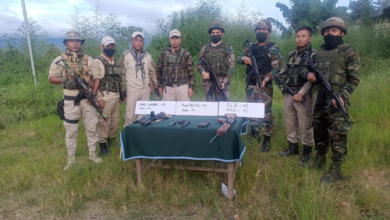
When some like the Aftab Poonawals or Sahil do the most spine chilling crimes like chopping the partners’ body to several pieces and let the police scramble for their wits, they are relaxing in the jails with their hidden notoriety unknown to the world.
No fear of the legal mechanism, let alone the police, such instances take place one after the other like a tight slap on the face of the law-keepers.
Here we have a case that dates back to 2006-2006 when a brute killed and dared the police leaving chilling notes along with the three headless bodies as a vengeance against the system for punishing him for no fault of him, that is how the note read.
Between October 2006 and May 2007, Chandrakant Jha, infamously known as the “Headless Bodies Serial Killer”, dumped three nude, headless, and decapitated bodies outside the gates of Delhi’s Tihar Jail, leaving handwritten notes daring the Delhi Police to catch him.
Jha, who had a history of previous arrests in connection with murder cases but was acquitted due to lack of evidence, was finally apprehended on May 20, 2007, near Mianwali Nagar in Paschim Vihar, in West Delhi.
During interrogation, he admitted to beheading multiple victims and dumping their body parts near Tihar Jail. He revealed that he would tie the hands and feet of his victims before strangling them.
Inside Jha’s room, investigators discovered a photo album showcasing his victims, taken shortly before their murders. The calmness depicted in these pictures was chilling, indicating that Jha knew exactly what he was doing.
Following his trial, Jha was initially sentenced to death, but the punishment was later commuted to life imprisonment. He is currently incarcerated in Tihar Jail, the very place where he callously dumped his victims’ remains.
Most of Jha’s victims were friends and acquaintances from his village. He would invite them to Delhi, gain their trust over a few days, and then brutally end their lives. The modus operandi of his crimes and the disturbing nature of the murders caused public outrage and garnered attention from the media and the general public.
In 2013, the then Additional Sessions Judge Kamini Lau, who presided over the case, expressed no mercy for Jha, highlighting the exceptional depravity and extreme brutality of his crimes.
Judge Lau stated, “The offence has been committed in exceptional depravity and extreme brutality. The postmortem report confirms that the death in this case was a result of decapitation (not a case where decapitation followed death). How much pain the victim must have suffered at the time of his death?” Jha was also fined Rs 20,000 for his heinous actions.
Furthermore, the court criticized the Delhi Police for their casual approach to the investigation, which resulted in the failure to establish the identity of one of the victims referred to as “Dalip” by the convict. The court condemned the lack of efforts made to trace the victim’s family, highlighting the need for a more diligent and thorough investigation process.
The conviction of Chandrakant Jha brings some closure to the families of his victims, who endured unimaginable pain and loss. It serves as a reminder of the importance of a robust and meticulous criminal justice system that leaves no stone unturned in the pursuit of justice for the victims and their loved ones.






